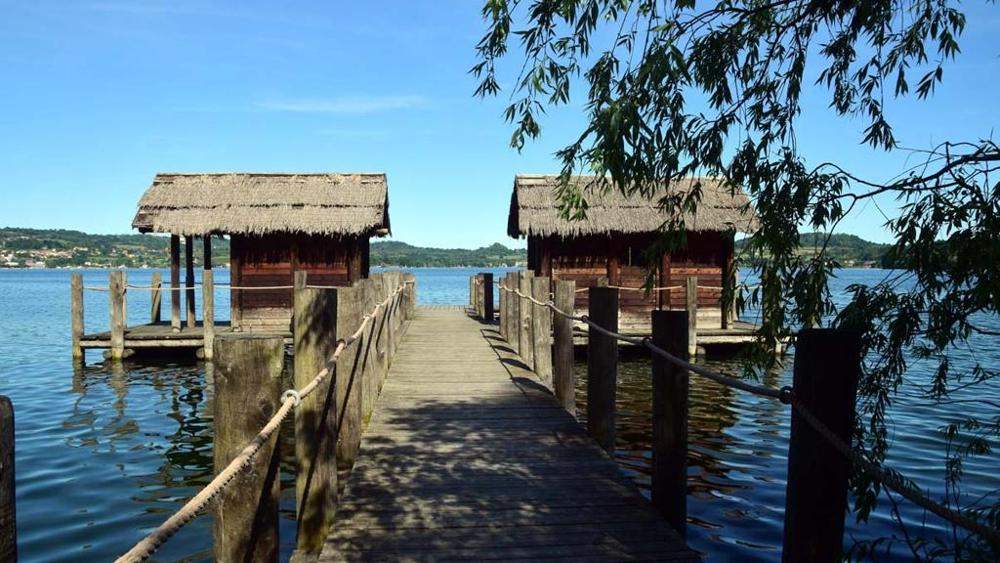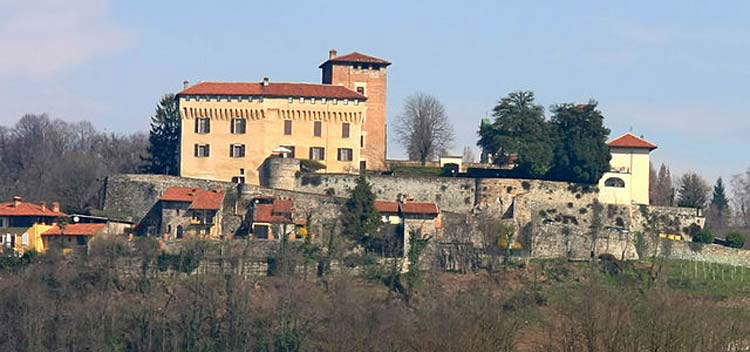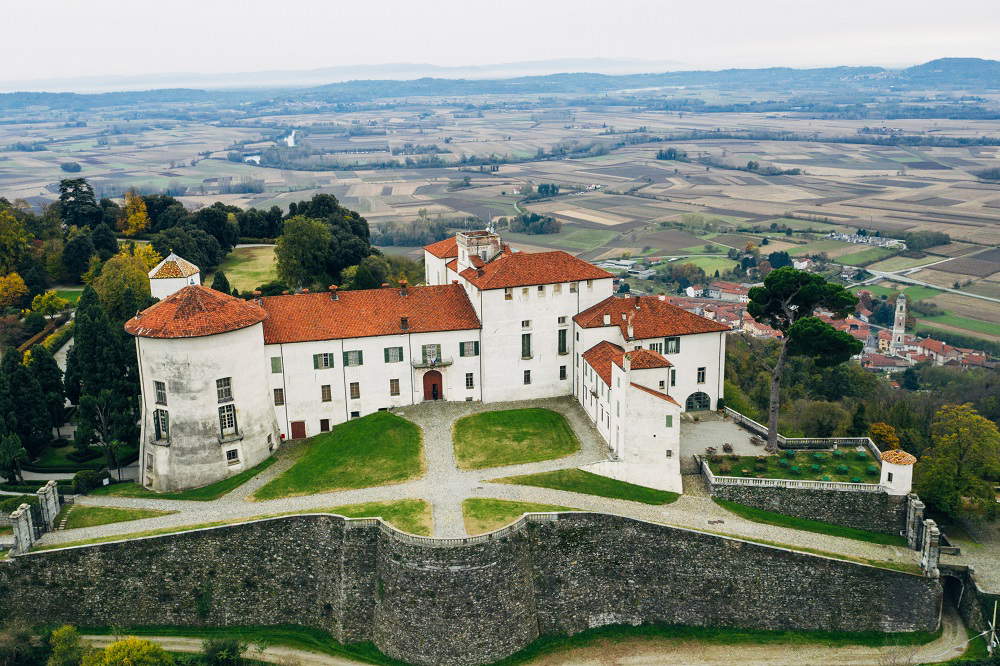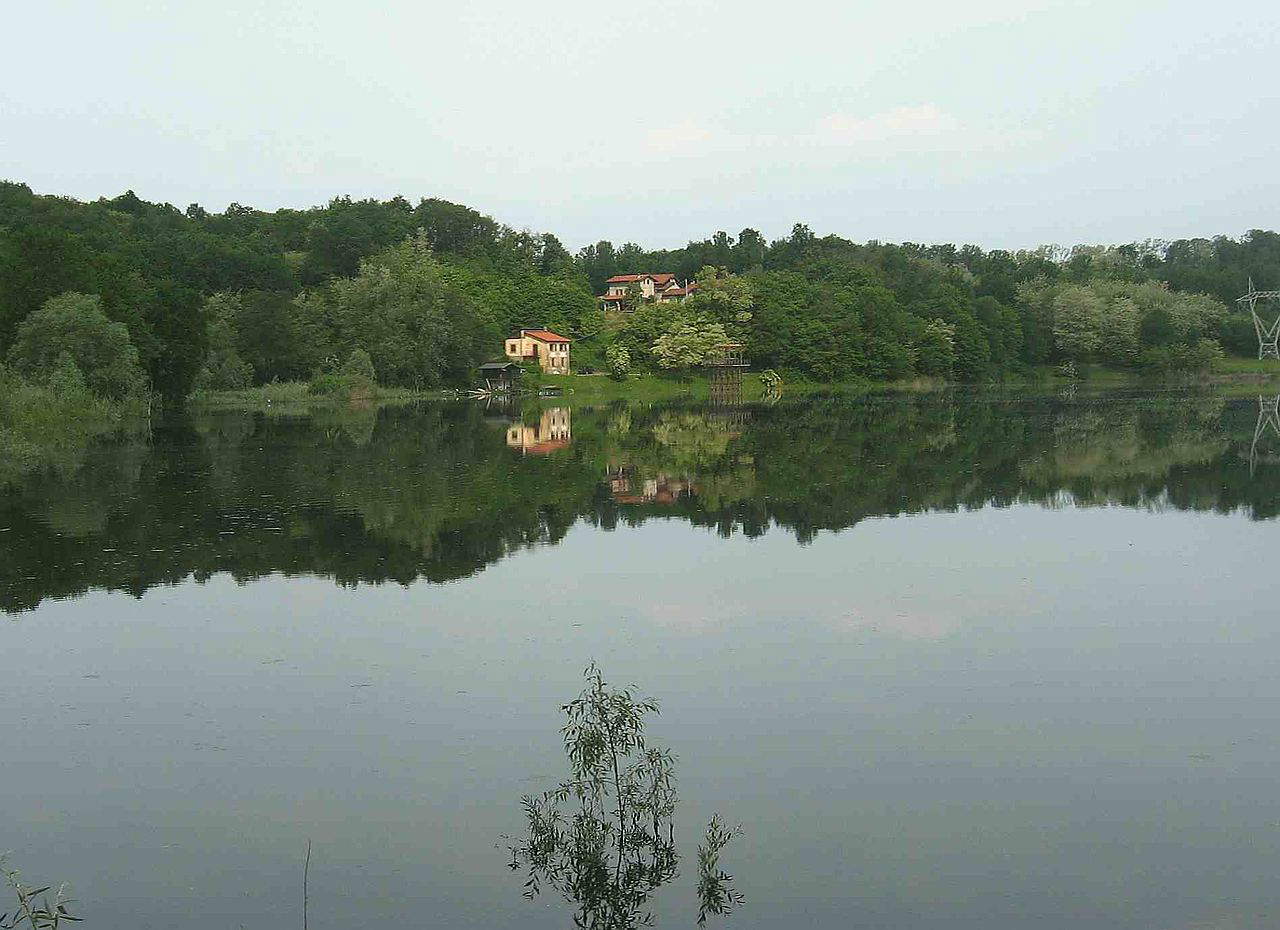It can be said that Lake Viverone, in Piedmont, is a rarity in Italy, as it is fed by the same watercourses that cyclically inject water or bring it out of the reservoir. A rarity that has been specially studied by the Piedmont Regional Environmental Protection Agency. Lake Viverone is located in the province of Biella on the border with the province of Turin, and it is a site with a history dating back thousands of years, surrounded by castles, prehistoric pile-dwelling relics (prehistoric Bronze Age artifacts from this area come from the Museum of Antiquities in Turin), epic views and places to do enjoyable nautical sports. But it is also a suitable destination for relaxation: in fact, Lake Viverone has a well-equipped lakefront (villages, hotels, beaches) where you can enjoy the sun and take a swim just a stone’s throw from the city and is close to many places to discover with their even somewhat peculiar stories (including a legend similar to that of the Loch Ness monster). It is a lake of glacial origin like many of the lakes close to the Alps, very extensive and swimmable, named after the municipality that overlooks it, having changed several over the centuries. Viverone itself is a quiet place, with 1,600 inhabitants, set in one of those mountain ranges that are called “moraines,” that is, those where the material of which the mountains are made up is that which was formed in the glaciers and has not stratified. And there are beautiful ones in Piedmont, as in this case: the Serra d’Ivrea, the most impressive glacial moraine in Europe, a short distance from Turin. Let’s see below five destinations for a stay on Lake Viverone.
Viverone’s circumnavigation is not completely walkable as a delightful Lakeside promenade that unravels from the municipality itself for about 80 percent of the shores, with lively streets, clubs, beaches and romantic spots, is associated with a part still left free: lakeshore where nature takes the lead with seasonal vegetation taking its course. It can be reached by boat or on foot by hiking. Lake Viverone has a natural inclination to provide a quiet weekend for those seeking romantic getaways or relaxation, with walks from splendid views among colorful sunsets and snow-capped Alps, but also the fun of water sports activities. And every day can be new because there are plenty of things to see in the surrounding area.

As mentioned, the northern and western shores are more urbanized and the remaining part is wilder, and it is in this part that the remains of a prehistoric pile-dwelling village have been found so much so that UNESCO listed it among the prehistoric pile-dwelling sites in the Alps in 2011. The artifacts found in Lake Viverone are preserved and displayed at the Archaeological Museum in Turin and the Museum of the Territory in Biella. This is a settlement of pile dwellings, or huts that were installed on a horizontal wooden platform supported by piles driven into the bottom of a lake, marsh, or waterway. Archaeological areas of this type in Italy can be dated between 5,000 and 500 B.C. The one found in Viverone at the Municipality of Azeglio was a pile-dwelling village supported by as many as 5,000 piles and dating back to the Bronze Age (1650/1350 B.C.) where the remains give us an image of the series of piles arranged in a circular fashion with a diameter of up to 70 meters with the layout of the streets and defensive lines, and from the objects of common life (found in excellent condition) we can imagine the kind of people who lived there and with what activities on the shores of Lake Viverone.

Standing majestically on Lake Viverone for more than a thousand years is the Castle of Roppolo, named after the locality on which it stands. There have been several owners and lineages such as the Bichieri, Viconti, Savoia and Valperga families who have alternated inside it with a long series of illustrious guests such as Napoleon Bonaparte, Facino Cane, and Tommaso Francesco di Savoia. Fully furnished, visiting it is like plunging into the time of its history, and it has a lot of history. Guided tours are available from April to October to let people tell you about it. The affordable price of the ticket is amply worth the visit and the rich history that can be heard and imagined, including that of the knight walled in alive, complete with armor (the remains found in the 19th century were attributed to Bernardo Valperga lord of Mazzè, who lived in the 15th century). The past is present with the coat of arms of the powerful family that ruled over the centuries: in fact, the Bichieri still have their family coat of arms on the main wall of the 13th-century wing, formed by three glasses half-filled with wine, under the cardinal’s hat of Cardinal Guala, famous for having built the basilica of Sant’Andrea in Vercelli.

Another beautiful castle to visit (it is just a quarter of an hour from Lake Viverone) is Masino Castle. It was again built and inhabited for ten centuries by the Valperga family, who claimed to be descendants of King Arduino. A nerve center of the region, in a position of supremacy, it has undergone various changes: from warlike to defensive set-up to a noble residence. The structure is in excellent interior condition and carefully furnished. A must-see is the ’Apartments of Madama Reale,’ which were built in the second half of the 17th century for Jeanne Baptiste of Savoy Nemours, wife of Victor I of Savoy. Walls that exude nobility and history of this Piedmont so dense with noble dynasties over the centuries. The castle is currently managed by the FAI, which bought it from Luigi Valperga di Masino thanks to a donation from FIAT, Cassa di Risparmio di Torino and Maglificio Calzificio Torinese, in 1988, and the dedicated website has all the information for guided tours, including those in the monumental park, which preserves one of the largest hedge mazes in Italy: “two thousand hornbeam plants shaped with meticulous regularity, having fun finding the exit without resorting to the solution offered by the elevated view of the central turret.” The scent in the spring is unobtainable elsewhere.

From lake to lake: after visiting Lake Viverone, it is worth going to Lake Bertignano with specially designed walks and bike routes so you don’t miss a moment of this alpine beauty. Lake Bertignano is located a few kilometers from Lake Viverone and is very rich in fish: you can fish for pike, carp, chub, perch, trout... and we also cross history here, with Bronze Age remains that testify to life lived here with pile dwellings as well, and the discovery of 2 monissile pirogues (long boats that predate canoes) is of great value. The discovery of the first exceptional artifact made in Roman times from chestnut wood and recovered in Lake Bertignano occurred in 1912, by chance, during work on the power line. It was a pirogue that is now preserved at the Museum of the Biella Territory: it is about 4 meters long and is dated to 250 AD. The second one, although discovered after more than eighty years, in 1984, is given a much older date: 1450 BC. Thus, we are talking about two objects of great historical value.

 |
| Lake Viverone, what to see. Itinerary between nature and history |
Warning: the translation into English of the original Italian article was created using automatic tools. We undertake to review all articles, but we do not guarantee the total absence of inaccuracies in the translation due to the program. You can find the original by clicking on the ITA button. If you find any mistake,please contact us.